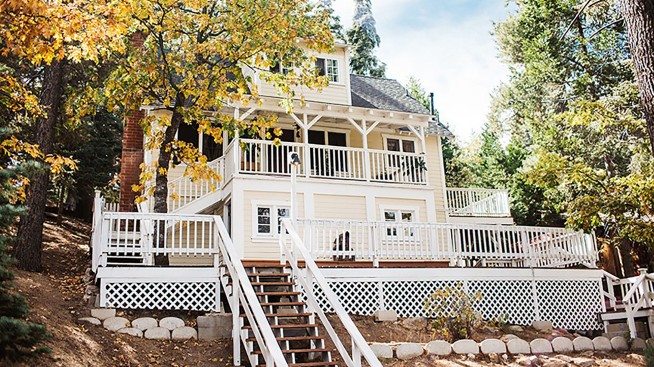What is a carriage house?

You may have heard the term “carriage house” and wondered exactly what it is. Today, the term may be used to represent properties attached like townhomes. While this may be correct, do note that this article is using the term in its historical context: A structure used to store horse-drawn carriages and related equipment. These structures were built between the 18th and 19th centuries, before automobiles became the primary mode of transportation. Let’s take a look at how these same structures are used today.
Why do people like carriage style homes?
In rural areas, carriage houses were strategically positioned behind larger homes for the owner’s convenience. Today, most people don’t rely on carriage homes for their intended historic purposes, but these structures do come with some unique attractions from an architectural and historical perspective and have the potential to act as a unique canvas for modern buyers. Here are a few things buyers are often drawn in by:
- Unique architecture: Because carriage houses were made to house large animals and equipment, their architecture is quite unique. High ceilings, exposed beams and large windows are all common characteristics of carriage houses, as are large central doors.
- Rich history: As mentioned, carriage houses date back to the 18th and 19th centuries and used to store wagons, buggies and horses — similar to a modern garage. In fact, as the automobile became more popular, those who could afford one often transformed their carriage house into today’s version of a garage. As time passed, carriage houses became uniquely sought after due to their rich history. Depending on the location, some carriage homes are passed down from generation to generation.
- Potential for customization and personalization: If you’re buying a property with a carriage house, it may not be used as your primary residence. Since it was originally used as a storage facility, it’s typically a smaller structure. Some people turn their carriage house into a guest house or home office. On the other hand, some people will renovate or build a home inspired by the architecture of a carriage house.
Features of carriage-style houses
In addition to their high ceilings, exposed beams and high windows, carriage-style houses are also known for having two stories and lofted spaces. Despite the compact nature of the home, these features often provide an open, spacious environment. Additionally, you may come across aesthetically elegant interior designs with exposed brick and wooden beams that further the general charm and character of a carriage home.
Factors to consider when buying a carriage house
If you’re considering buying a carriage house, there are a few factors you may want to keep in mind. While they’re a unique and timeless style, they may require additional consideration and financial planning:
- Condition of the property: Since carriage homes are historic structures, it’s helpful to evaluate the condition of the property to avoid an unintentional “fixer-upper” of a purchase. Getting a home inspection may be a helpful way to evaluate the overall state of the home, in addition to any major updates to, say, electricity or plumbing.
- Zoning and building codes: Depending on the location of the carriage home and its historical significance, there may be zoning and building codes that limit your ability to make renovations or structural updates. If you’re looking for a home you’d like to personalize, this type of home may not be for you.
- Renovation costs: If you decide to buy or renovate a carriage house, you may want to consider renovation costs in advance. It may be a significant financial and logistical undertaking that’s best approached with a plan and budget-friendly timeline in place.
Assessing the above may help you make an informed decision and ultimately decide whether the benefits outweigh the potential disadvantages to buying or modeling a carriage house.
Investment opportunities
Outside of their unique architectural charm and rich history, you may be wondering how you might leverage a carriage house as an investment opportunity:
- Historic preservation tax creditstax-deductibility-tax-benefits-real-estate-taxes-hl000065: Depending on the property’s location and its historic status, you may benefit from historic preservation tax credits. Historic preservation tax credits are federal income tax credits that may be used toward the rehabilitation and preservation of a historic property.
- Rental income potential: If your primary residence comes with an old carriage house or you buy one without the intention of living there or using it personally, you may be able to rent it out for additional income. Renting out an investment property may help create some passive income.
- Property appreciation: Like many real estate investments, the property may appreciate over time. With the right restoration and rehabilitation, you may see significant increases with carriage houses.
How to finance a carriage house
Carriage houses are used very differently today than they were back when they were invented. Because some may be considered historic homes or detached structures, the way they’re financed may also differ:
- Traditional mortgage options: If the carriage house isn’t considered a historic home and doesn’t have any other nontraditional lending requirements, you may be able to finance a carriage house with a traditional mortgage.
- Historic preservation loans: If the carriage house is considered a historic preservation site, you may qualify for a historic preservation loan. These loans are designed to finance the proper rehabilitation and renovation of historic homes.
- Home equity loans: If you already own a home with significant home equity, you may be able to finance the purchase or renovation of a carriage house with a home equity loan.
In summary
A carriage house is a historic structure that was once used to store horse-drawn carriages and associated equipment. Today, carriage houses are appreciated from an architectural perspective, and often used as home offices, guest homes or apartments. Depending on its historic status, you may be able to finance a carriage house with a traditional loan.



